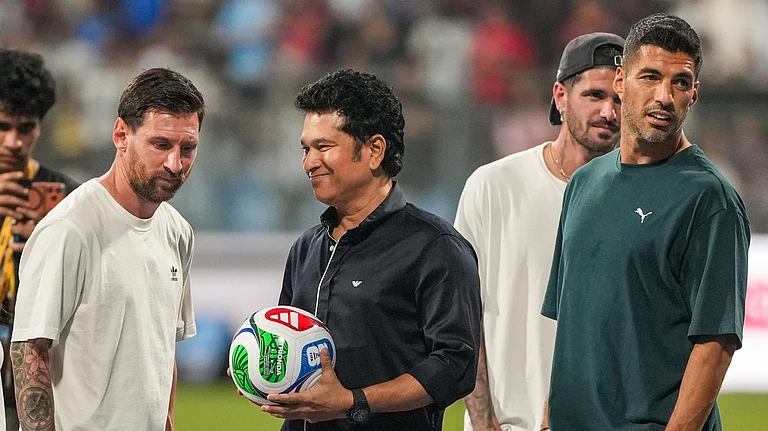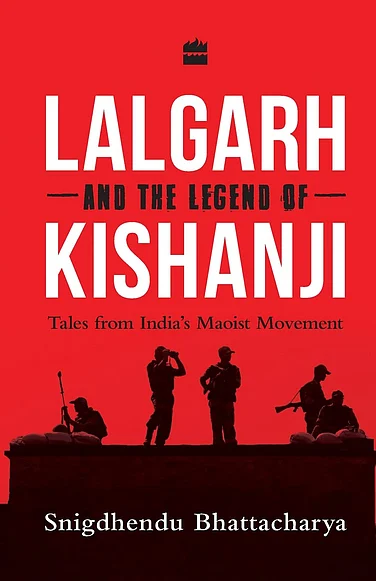On January 25, 1965, a year before the Official Languages Act was to come into force, 27-year-old Keelapaloor Chinnasamy, the only son of his parents, self-immolated at the Tiruchi railway station, shouting pro-Tamil slogans. In his suicide note, he had written, “Tamizh vaazhavendum enru naan saagiren. (I’m dying in order for Tamil to live).” Five other self-immolations by youth followed. One of the most popular rallying cries of these anti-Hindi agitations has been the slogan: Udal Mannukku, Uyir Tamizhukku!—[Our] body for the soil, [our] life for Tamil. This is not a top-down struggle that is going to start and end with fancy op-eds by well-read intellectuals. This is a grassroots struggle—the vanguards of our language are our most marginalised and oppressed people. This is a struggle that unites every section of Tamil society, and it would do well to remember that the willingness to lay down one’s life for our language is a Tamil legacy.
The first anti-Hindi agitations were announced by Periyar in response to the decision to make teaching of Hindi mandatory for classes VI to VIII in 125 schools in the Madras province by C. Rajagopalachari. This movement united the Tamil people like never before. The Tamil Nadu Women’s Conference, under the leadership of Neelambigai Ammaiyar, was held on November 13, 1938, to showcase women’s support to the anti-Hindi agitation. It was in this historical meeting that E.V. Ramasamy was given the honorific title ‘Periyar (the great one/elder) by the women of Tamil Nadu. Addressing this meet, Periyar would foreshadow his monumental declaration, “Tamil Nadu is for Tamils”—not out of linguistic pride or chauvinism, but to fiercely stand up against the colonisation and domination of Tamil people, to counter the attempts to subjugate them by the imposition of Hindi.
ALSO READ: Let A Language Contend
What is often consigned to the margins of history is how feminist the language movement was. Addressing the conference, Periyar said, “We have gathered here to oppose their conspiracy of ruining our people’s self-respect by teaching Hindi to our children though they have themselves accepted that it is a north Indian language that exists for the sake of Aryan arts…Today a woman came up to me and said she was ready to go to jail. I was very happy on hearing her. Tomorrow, it will be known. Only when the time comes, when Tamil women begin going to jail, good things will start happening to us…Women should come forward to cooperate with men in the struggle. In a struggle, there is no such thing like a specific job for men and another for women. Both are equal. So, if women also enter the Tamil struggle, very soon we will achieve a Tamil Nadu for the Tamils. Can’t all of you get together and fill an entire prison?” (Translation by the author)
And the women of Tamil Nadu enthusiastically heeded his call. In the first anti-Hindi agitations to rock the (then) Madras Presidency, more than 1,200 people were arrested in 1938, of whom 73 were women and 32 children. Women courted arrest along with their infants in arms. Thirty-six women served prison terms. In the second prominent wave of anti-Hindi agitations, in the light of the Official Languages Act coming into force, young school-going and college-going women enthusiastically participated in full force. My own mother, barely 14 years old at that time, remembers taking a piece of charcoal and writing ‘Down with Hindi’ graffiti on the walls. This is not a special personal anecdote. This spontaneous, widespread participation characterised the mood of the moment. These protests marked a crucial point in that generation’s memory.

This is not a relic of the past that I had to dig out from the archives to make the case. In this age of Twitter, the hashtag #StopHindiImposition goes viral. Female twitterati with massive followings led the charge. DMK MP Kanimozhi’s brainchild, the “Hindi Theriyadhu Poda” (Don’t know Hindi, Buzz Off/Get Lost!) T-shirts have become a fashion accessory among urban middle-class youth. As she tweeted, “A spark is enough to ignite a sentiment.” It would do well for the Union home minister to be aware that Periyar’s call to Tamil women holds true even today. Women’s full-fledged participation in the public sphere transforms the family into a political unit and a hub of activism. The struggle is a site of equality, and Tamil women will walk in the way of their ancestors, eagerly taking to the streets in defence of their language.
Colonialism doesn’t always wear a white skin
There is a conflation of English with colonialism; this outlook predates Hindutva. What is conveniently forgotten is that Hindi is an even later entrant to the Tamil landscape than English, and equally, if not more foreign. Even C. Rajagopalachari (popularly, Rajaji), the Tamil Brahmin Congress leader who imposed Hindi in 1938 as Premier of the Madras Presidency, was sharp enough to understand the situation on the ground. In a matter of three decades, he had taken a U-turn. In the 1960s, he vehemently opposed Hindi imposition and famously uttered, “English Ever, Hindi Never.” Making a bogeyman out of English only increases the people’s fear of total Hindi imposition. In her study of language politics in the state, Sumathi Ramaswamy writes, “These waves of anti-Hindi protests have critically shaped the contours of party politics in modern Tamil Nadu, arguably more so than the anticolonial agitations against the British.” This is a lesson to remember.
Hindutva is eager to ride the decolonisation tiger to its own ends at this historical juncture—here, replacing English with shuddh Hindi. No one is buying this faux-progressive positioning. When deployed by the RSS-BJP, decolonial rhetoric is often a grandstanding to return Indians to an indigenity (also, indignity) that embeds the practice of caste discrimination and the dehumanisation of women. This is the fate that movements for caste annihilation and women’s liberation have sought to escape, please do not ask of us to crawl back into servitude. Besides, Hindi has swallowed up all its dialects, the officially-sanctioned imposition of the Devanagari script is yet another step towards cannibalising many more languages. Spare us Tamils this language death.
Where propaganda is the norm, myth-busting is an essential duty. Firstly, the idea that Hindi is spoken by a majority of Indians is a claim that has to be ferociously contested. Only 26 per cent of the Indian population selected Hindi as their mother tongue, and about 40 per cent of those under the Hindi label had actually chosen one of its mutually intelligible variants (Bhojpuri, Rajasthani, Magadhi, Chhattisgarhi). What if these languages stand up for their own identity, and refuse to come under the Hindi umbrella? Moreover, looking at the 2011 language census, 23 states and Union Territories out of 35 did not choose Hindi as their first choice of language. Of these 23, in 16 states, only a very low percentage had chosen Hindi as a second or third choice.

Secondly, the growth of Hindi is primarily because of demographic change, a social reproduction of language. Experts qualified to unpack this data attribute this to “fertility rates being higher among the poor and among women with less education, who comprise a higher share of Hindi speakers” and to the outward migration of these Hindi speakers to other destination states where they contribute to the rise in the number of native speakers of Hindi.
Thirdly, the temerity of proposing Hindi as a link language between states hides within its abstract structural arrogance the sheer numbers of people who will be affected by it. Only 0.55 per cent of people in Tamil Nadu identified Hindi as their first choice of language. Inversely, 99.45 per cent of people chose a language other than Hindi as their first choice. Only 2.11 per cent of people in Tamil Nadu chose Hindi as one among their top three choices, which once again means, 97.89 per cent of people did not see Hindi as even among their top three choices. In absolute numbers, this is upwards of six crores. How can this large mass of people be engineered overnight to learn to speak Hindi, against their will?
I have a lot of things to say about the abject nature of structural indicators of living standards, literacy, mortality etc., in the Hindi-speaking states. Besides, the fact remains that Hindi-speaking states provide a labour-surplus pool who migrate to other states in search of jobs because their prospects are so limited. I restrain myself from entering this debate because the imposition of Hindi is primarily a cultural imposition rather than an economic proposition. This cultural invasion, happening as a part of government policy which favours only Hindi speakers, can quickly transform into an economic sanction as well.
Education, to the Tamil people, represents their way out of oppression and destitution. Hindi has been resisted not only because it is a foreign language, and because it enforces north Indian supremacy over the Dravidian south, but also because Hindi has been seen as a tool which is intricately connected with establishing Sanatana Dharma (the caste order, especially a hierarchy which enshrines that only Brahmins retain knowledge capital). As early as August 1937, an editorial in the Kudiarasu argued that if Hindi were to become a mandatory subject, 90 per cent of the non-Brahmin children would fail while 100 per cent of the Brahmin children would get through. Therefore, it is a good tool to prevent non-Brahmin children from acquiring higher education but is not indispensable for Tamils in their life or their intelligence.
Nearly a century later, when the BJP introduced the National Education Policy, Tamil Nadu resisted it. Like the Dravidar Kazhagam and DMK, VCK leader and MP Thol Thirumavalavan organised protests against the NEP, and cautioned the OBCs of Tamil Nadu that this policy was to systematically create drop-outs from education even at the level of schools in order to keep intact a pool of uneducated youth for the task of doing menial labour, which according to the caste system, is the hereditary task of shudras. The RSS-BJP cannot bear to witness education shatter the traditional caste roles, he said. In Tamil Nadu, all of this looks like an action replay. The introduction of NEET, the proposed CUET, and policy changes mooted by the Union government all strengthen Tamil people’s fears that efforts are being undertaken to keep them from getting educated. Messing with their future is something no self-respecting Tamil would accept. It is not for nothing that poet Bharatidasan wrote: Tamizhukkum amizhthenru peyar, andha tamizh inba thamizh, engal uyirukku ner, uyirukku ner! (Tamil also has another name/Amudhu, the nectar of immortal life/This Tamil, this rapturous Tamil/Is equivalent to our lives/Is our life).
- 0.55% Tamils identify Hindi as their first-choice language
- 97.89% Tamils do not see Hindi among their top three language choices
(This appeared in the print edition as "Body for Soil, Life for Tamil")
(Views expressed are personal)
ALSO READ
Meena Kandasamy is a poet and feminist activist

























